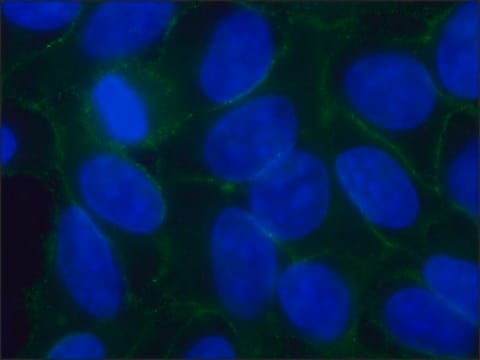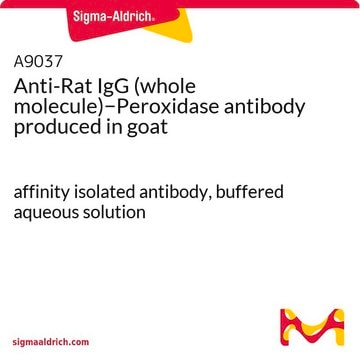MABE1152M
Anti-Cryptochrome-1 Antibody, clone D46-3361
clone D46-3361, from rat
Sinónimos:
Cry1, cryptochrome 1 (photolyase-like), Cryptochrome-1, Phll1, Cry-1
About This Item
Productos recomendados
origen biológico
rat
Nivel de calidad
forma del anticuerpo
purified immunoglobulin
tipo de anticuerpo
primary antibodies
clon
D46-3361, monoclonal
reactividad de especies
mouse
envase
antibody small pack of 25 μL
técnicas
ChIP: suitable
western blot: suitable
isotipo
IgMκ
Nº de acceso NCBI
Nº de acceso UniProt
modificación del objetivo postraduccional
unmodified
Información sobre el gen
mouse ... Cry1(12952)
Descripción general
Especificidad
Inmunógeno
Aplicación
Chromatin Immunoprecipitation (ChIP) Analysis: A representative lot detected Cryptochrome-1 in Chromatin Immunoprecipitation applications (Ye, R., et. al. (2011). J Biol Chem. 286(29):25891-902).
Calidad
Western Blotting Analysis: A 1:500 dilution of this antibody detected Cryptochrome-1 in 10 µg of NIH/3T3 cell lysate.
Descripción de destino
Forma física
Otras notas
Not finding the right product?
Try our Herramienta de selección de productos.
Código de clase de almacenamiento
10 - Combustible liquids
Clase de riesgo para el agua (WGK)
WGK 2
Certificados de análisis (COA)
Busque Certificados de análisis (COA) introduciendo el número de lote del producto. Los números de lote se encuentran en la etiqueta del producto después de las palabras «Lot» o «Batch»
¿Ya tiene este producto?
Encuentre la documentación para los productos que ha comprado recientemente en la Biblioteca de documentos.
Nuestro equipo de científicos tiene experiencia en todas las áreas de investigación: Ciencias de la vida, Ciencia de los materiales, Síntesis química, Cromatografía, Analítica y muchas otras.
Póngase en contacto con el Servicio técnico








